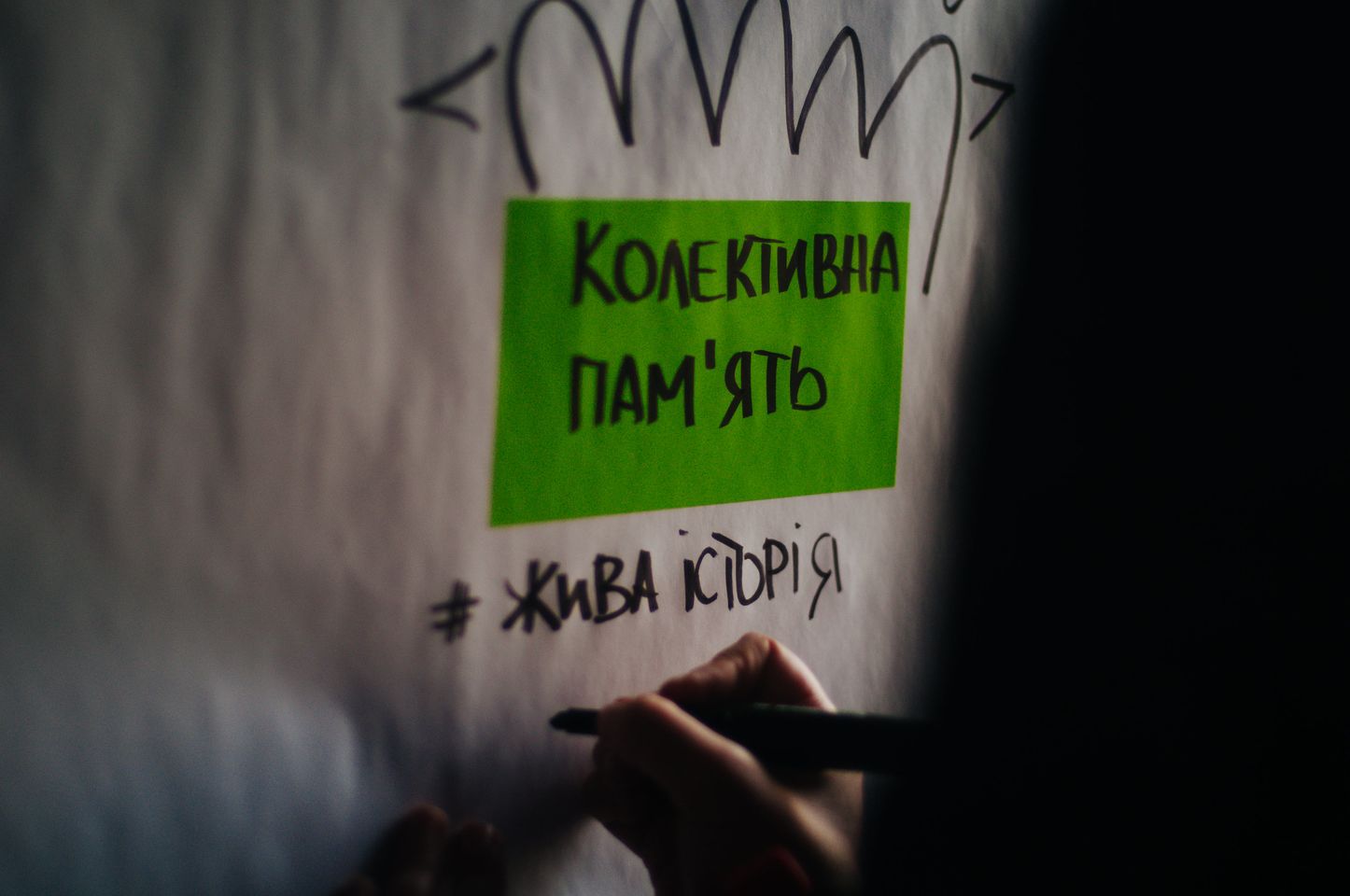Trust and Memory: Participatory Practices in Culture, Arts and Media for Community Trust and Cohesion

Funding: UCBI
Partners: Memorial museum of totalitarian regimes«Territory of Terror», Asortymentna kimnata, post impreza, proto produksiia, Past / Future / Art
Duration: November 2022 — February 2023
Budget: 40 008,03 USD
Coordinator: Alyona Karavai
Contact: karavai@insha-osvita.org
Both the existing experience of a full-scale invasion and the possibility of a lasting war or a post-war recovery must now be highlighted, realized and reflected. Participatory art practices help society process traumatic experiences while we are still at war, and cultural practices of commemoration prepare the ground for reflection on traumatic events after it is over. Together, they integrate complex topics into a public dialogue that is the basis for building trust.
«Trust and memory» is a project that expands the professional toolkit of Ukrainian artists in working with themes of commemoration. The project combines educational programs and events, artistic residencies and a series of special media materials.
Goals and directions of the project:
- Online qualification program on memorial practices for artists, independent cultural managers, municipal museum workers and representatives of local authorities.
We conducted an online course «How will we remember?» for museum workers, artists and cultural managers. It consists of 8 lectures about how to document the war events and present the traumatic experience at the museum exhibitions. We talked about new «museum tasks» after February 24, explored the technology of the war archive, and considered the context of international cooperation. The course was created in close partnership with: Museum Crisis Center, Territory of Terror and NGO New Museum.
- An offline residency for artists and art researchers working at the crossing of memory and trust.
At the end of 2022, the curatorial team of the Asortymentna Kimnata selected 14 participants of the residency «When was the story interrupted?», the purpose of which is to explore the practice of commemoration: from observation to understanding shared experience through artistic activity. For 2 weeks, the artists visited museums of the Hutsul region, were involved in cooperation with digital collections and implemented their ideas with the curatorial support of Dmytro Chepurny and Anton Usanov.
The results of the residency were presented at the «A tree behind a trees» exhibition in January in the Asortymentna Kimnata. You can find out about the residency process and exhibition overview on website of the partners — the Asortymentna Kimnata project space.
- Offline training for local journalists and critics on cultural journalism.
Together with post impreza, we held a 4-day training «Fear and Hate in Cultural Journalism» in order to explore the text as a tool for conveying information and finding reference points that will be comfortable for reading.
We talked about cultural journalism and criticism in Ukraine and abroad, the formats of writing, and how texts about culture can change society. As part of the training, there was also a public discussion «How to talk about public and common memory through texts about culture». It was about the state of cultural journalism in Ukraine and society’s readiness to perceive social problems through texts.
- Special media project about the culture of memory in Ivano-Frankivsk and the region.
We published 3 texts about the culture of memory, the politics of memory, and commemorative practices in Ivano-Frankivsk and the Carpathian region. Thus, in partnership with the «Past/Future/Art» initiative and the participants of the residency «When was the story interrupted?» we prepared an article «Expanding Memory. New words to describe war, culture, and commemoration». The second article was prepared by Natalia Fedoryshyn based on a conversation with historian and head of the NGO «Memorial» Vasyl Tymkiv. It was about Dem’ianiv Laz, the place of mass executions of Ukrainians. In order to preserve history for posterity, there was created a memorial complex after independence. In the last article, historian and artist Natalia Derevianko talks about how the Russian-Ukrainian war has opened the wound of memory in Ukrainian society. She also talks about artistic commemorative acts and accents since 2014, and contemporary artistic practices as a method of existential documentation of the present wartime.
All 3 texts were published in online media post impreza from November 2022 to February 2023.
You can follow the media project about the culture of memory and cultural life in Ivano-Frankivsk and the region on the post impreza partner website.




